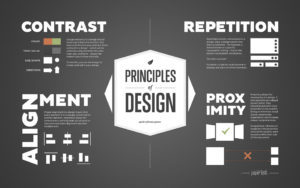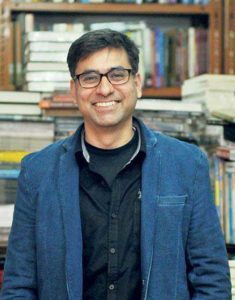ON CONCEPT AND DESIGN PRINCIPLES

First year students always struggle massively with this huge enemy of theirs call ‘THE CONCEPT’. As a teacher and a studio director, over the year, along with some exceptionally good concepts and ideas by some exceptional students, I have also been subjected to so many funny, ridiculous and at times, irritating concepts. How is design teacher supposed to react when a student, during a design concept submission says, “my concept for a hospital is an apple as ‘an apple a day keeps the doctor away’ means that an apple is good for health so I want to make the plan of my hospital in the shape of an apple.” But the majority of the class is smarter – they choose various design principles as their concept to play safe – unity, harmony, rhythm, symmetry, and so on. After all, all design teachers worship D.K. Ching!
Using design principles is a good idea if you can not generate a ‘philosophical’ concept for your design but one has to understand what that particular design principle does to their design. Is it suitable for their project? What effect it creates? And what kind of built environment does it generate? Not all design principles fit suitable for all projects. I don’t believe in giving examples in any design discussion because I feel that it gives a strong image to the student and it becomes very difficult for them to break away from it but I am gonna throw a hazy example here just to make this idea clear – a museum of ‘deconstructivism’ would not speak honestly if the building is designed in perfect symmetrical harmony.
Design principles are tools and the right tool should be used for the right task (read project)
I will pick up an example from film making to elaborate on this (as in India we only worship Gods and Film stars). If you have seen Nil Battey Sannata, in some scenes, it had a very interesting visual treatment. Most of the shots that were shot inside the house of Chanda and Apeksha, were filmed used a hand held camera. It was done so to portray the instability in their household – the father was dead, the mother was trying here best to get her daughter to study well and get good education and the daughter, a rebel, never wanted to follow what her mother wanted for her. On the other hand, most the scenes at Dr Deewan’s (Ratna Pathak Shah’s) house were shot with fixed camera portraying the stability persistent there. The camera treatment was given a thought.
The film makers did not use the treatments they used because they knew them; they used them because they found them suitable for the situation and the story. And I think this understanding is crucial for all art and design students.
– Rahul Saini
 Rahul Saini is the bestselling author of five hugely popular novels, all of which have featured in various bestselling lists across the nation. His books have strong comic tones and present up-beat stories about the free spirited and outgoing character of today’s youth. Apart from being light entertainers, his books carry relevant social messages. He is formally trained as an Architect and finished his graduation in 2007 from Sushant School of Art and Architecture, Gurgaon. He is a seasoned traveler and has a keen interest in film making, photography and fine arts.
Rahul Saini is the bestselling author of five hugely popular novels, all of which have featured in various bestselling lists across the nation. His books have strong comic tones and present up-beat stories about the free spirited and outgoing character of today’s youth. Apart from being light entertainers, his books carry relevant social messages. He is formally trained as an Architect and finished his graduation in 2007 from Sushant School of Art and Architecture, Gurgaon. He is a seasoned traveler and has a keen interest in film making, photography and fine arts.
You can follow him on
His Blog – https://rahulsainiblog.wordpress.com/
Website – www.rahulsaini.in
Facebook – https://www.facebook.com/rahul.saini.1213
Twitter – https://twitter.com/rahulsaini258
Instagram – https://www.instagram.com/writingrahul/



